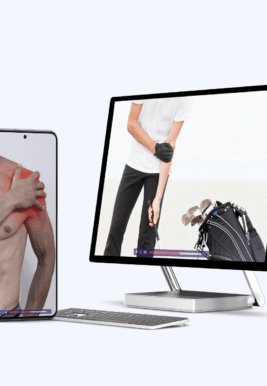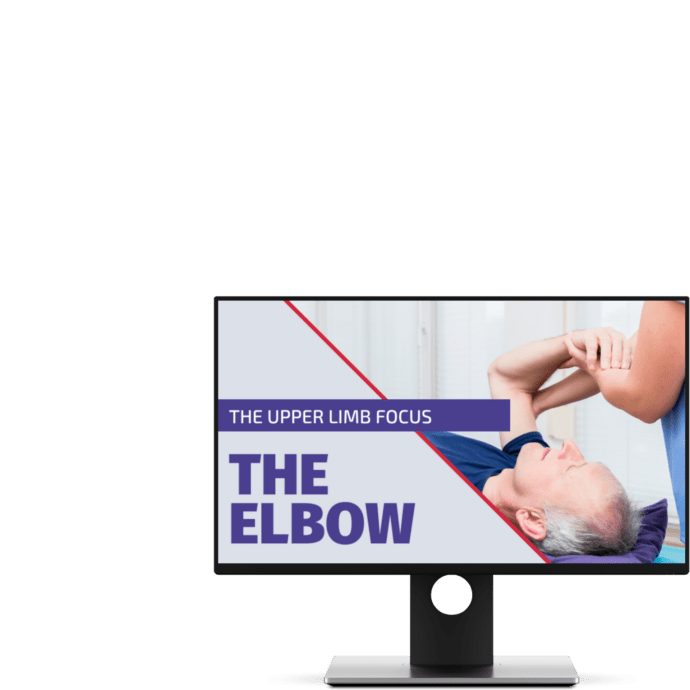Posterolateral Rotatory Instability of the Elbow (PLRI) | Diagnosis & Treatment

Posterolateral Rotatory Instability of the Elbow (PLRI) | Diagnosis & Treatment
Introduction & Epidemiology

 The elbow is the second most often dislocated joint in the body after the shoulder. PLRI is the most common form of elbow instability as the result of disruption of the lateral collateral ligament complex. This leads to posterolateral rotatory subluxation of the ulna and radius.
The elbow is the second most often dislocated joint in the body after the shoulder. PLRI is the most common form of elbow instability as the result of disruption of the lateral collateral ligament complex. This leads to posterolateral rotatory subluxation of the ulna and radius.It typically occurs as a result of a fall on the outstretched hand, generating an axial load, valgus force, and an external rotation movement about the forearm with respect to the humerus.
This causes the radial head and proximal ulna to subluxate posterolaterally away from the humerus in a rotatory fashion detaching or tearing the lateral collateral ligament (LCL) complex (Camp et al. 2017).
The severity of PLRI can be divided into three stages (Camp et al. 2017):
1. Detachment or tearing of the LCL complex
2. Perched dislocation: Greater anterior displacement, progression of tissue disruption anteriorly and posteriorly around the elbow to the medial side
3. Full dislocation: Tissue disruption involves the medial collateral ligament, which is typically peeled off the bone
With further displacement, the dislocation forces continue to detach or tear the common flexor-pronator origin, resulting in a grossly unstable elbow (described as stage 3c).
Next to trauma, PLRI can also be associated with tennis elbow or iatrogenic injury from prior lateral elbow surgery. It may also present as a tardy PLRI caused by cubitus varus from malunion of a childhood supracondylar humerus fracture (Camp et al. 2017).


No data on incidence or prevalence are currently described in the literature for elbow instability.
Follow a course
- Learn from wherever, whenever, and at your own pace
- Interactive online courses from an award-winning team
- CEU/CPD accreditation in the Netherlands, Belgium, US & UK
Clinical Presentation & Examination
Signs & Symptoms
Patient history will often disclose prior elbow trauma with a subluxation or dislocation event or previous lateral elbow surgery (Singleton et al. 2004).
Patients often complain about lateral elbow pain with activities that place the elbow into extension and supination. This can for example be pushing on armrests to get up from a chair or a prone push-up motion. Furthermore, the elbow pain may be accompanied by mechanical symptoms such as clicking, locking, or snapping that is most prominent at around 40° of flexion as the arm extends (Fedorka et al. 2016).
In contrast, patients with chronic PLRI usually have a full range of motion without pain.
Camp et al. (2017) mention three broad categories of PLRI presentation:
-
- Majority of patients: Mechanical symptoms of instability after elbow trauma with dislocation, subluxation, or fracture-dislocation. These patients complain of clicking, snapping, or a clunk. Patients might notice a bump and/or a dimple if the elbow has a tendency to subluxate for more than a few seconds. Some patients might even be able to subluxate the radius under their own volition.
- Patients present with lateral elbow pain, often without mechanical symptoms, and a history of tennis elbow or lateral elbow surgery. Oftentimes, these patients have had cortisone injections for their tennis elbow, which might have a causal relationship with the development of instability.
- Tardy PLRI: Altered elbow mechanics cause gradual attenuation of the LCL complex. This can often be the case in patients with cubitus varus from a childhood supracondylar malunion and patients with dysplasia or hypoplasia of the coronoid.
Physical Examination
To begin your assessment, elbow mechanics and alignment, especially for cubitus varus, should be examined. According to Camp et al. (2017), the Posterolateral Rotatory Drawer Test is the most reliable and sensitive test for PLRI as it can be performed in anesthetized and awake patients. However, no study has yet validated this claim.
The Lateral Pivot-Shift Test can be difficult to perform in awake patients due to inadequate relaxation or discomfort. For this reason, the test is scored positive in the case of Apprehension.
For this reason, the test is also called Lateral Pivot-Shift Apprehension Test. The Pivot-Shift Test has been validated by Regan et al. (2006) who found a sensitivity of 100% in anesthetized subjects and 37,5% in awake patients with unknown specificity values.
Apprehension by the (awake) patient, therefore, indicates a positive test and usually occurs at around 20-40° of elbow flexion.
The subluxation can be reduced with a clunk (in patients who can completely relax).
Other common orthopedic tests to assess posterolateral rotatory instability of the elbow are:
WATCH TWO 100% FREE WEBINARS ON SHOULDER PAIN AND ULNA-SIDE WRIST PAIN

Follow a course
- Learn from wherever, whenever, and at your own pace
- Interactive online courses from an award-winning team
- CEU/CPD accreditation in the Netherlands, Belgium, US & UK
Treatment
Nonoperative treatment is often unsuccessful in chronic cases of PLRI. The reason is that it is difficult for patients to avoid gravity varus positions with the shoulder abducted or a combined extension and supination motion of the elbow that many activities of daily living require (Fedorka et al. 2016).
The majority of patients will require surgical treatment in which the lateral ulnar collateral ligament is either sutured (in the acute PLRI patient) or in which an auto- or allograft is used (in the chronic population) (Fedorka et al. 2016).
Reuter et al. (2016) have published rehabilitative concepts after PLRI surgery. They found that bracing and limiting the range of motion to 30° of extension following PLRI surgery is common. ROM was limited from one day up to six weeks. In the majority of studies, strengthening was started from weeks 6-8.
Return to sport varied from three to twelve months. There is currently no consensus on rehabilitative and conservative treatment modalities for patients with symptomatic PLRI.
Do you want to learn more about elbow conditions? Then check out our other ressources:
- Wrist & Elbow Injuries in Combat Sports with Ian Gatt
- Wrist & Elbow Injuries in Sports with Ian Gatt (Webinar)
References
Follow a course
- Learn from wherever, whenever, and at your own pace
- Interactive online courses from an award-winning team
- CEU/CPD accreditation in the Netherlands, Belgium, US & UK
Increase your confidence in assessing and treating the Stiff Shoulder, Elbow & Wrist


What customers have to say about this course
- Senne Gabriëls30/12/24A complete understanding of elbow pathologies and management Very broad explanation of al the possible differential diagnosis and nice comprehensive management strategies with a big catalogue of exercises.Barbara14/12/24Really good Like always, perfect support to learn at your own rythm.
clear explanations and evidence based.
Thank you - Mika Tromp06/12/24Nice course! Explained the difference between osteoarthritis and rheumatoid arthritis nicely. Learned a few new things to use in clinical reasoning as well.Anneleen Peeters03/04/24Upper Limb Focus - The Wrist & Hand GREAT CONTENT!
Very happy with the way the course is presented; part videos, text and quizzes.
Great teachers, great refresher on the anatomy. - Dominik Meier01/04/24The Upper Limb Focus: Wrist & Hand CLINICALLY RELEVANT AND VERY WELL STRUCTURED COURSE!
This course is clinically relevant and very well structured. The wrist and hand is a very complex topic which has been described in a comprehensive and logical way. I can really recommend it. I like the theory and especially the cases. Thank you!Lieselot Longé29/12/23Upper Limb Focus - The Stiff Shoulder GOEDE CURSUS OM THUIS OP EIGEN TEMPO TE BEKIJKEN!
Dit is de 2de cursus die ik volg via physiotutors en net als de vorige cursus vond ik ook deze zeer leerrijk. Je krijgt dankzij deze cursus nieuwe inzichten in de behandeling van een stijve schouder. Er worden behandeltechnieken (o.a. mobilization with movement) getoond via video’s. Het leuke is ook dat je de cursus op je eigen tempo thuis kan volgen en na het afronden van de cursus kan je er nog steeds naar terug grijpen. Ik kijk ernaar uit om nog andere cursussen van physiotutors te ontdekken en raadt het ook anderen ten zeerste aan!. - Mieke Versteeg01/12/22Upper Limb Focus - The Elbow Inhoudelijk kwalitatief zeer hoogstaand.
Nog betere vertaling naar Nederlands zou toegevoegde waarde zijn.
Hulp per mail/telefonisch op ieder moment aanwezig/bereikbaar.



